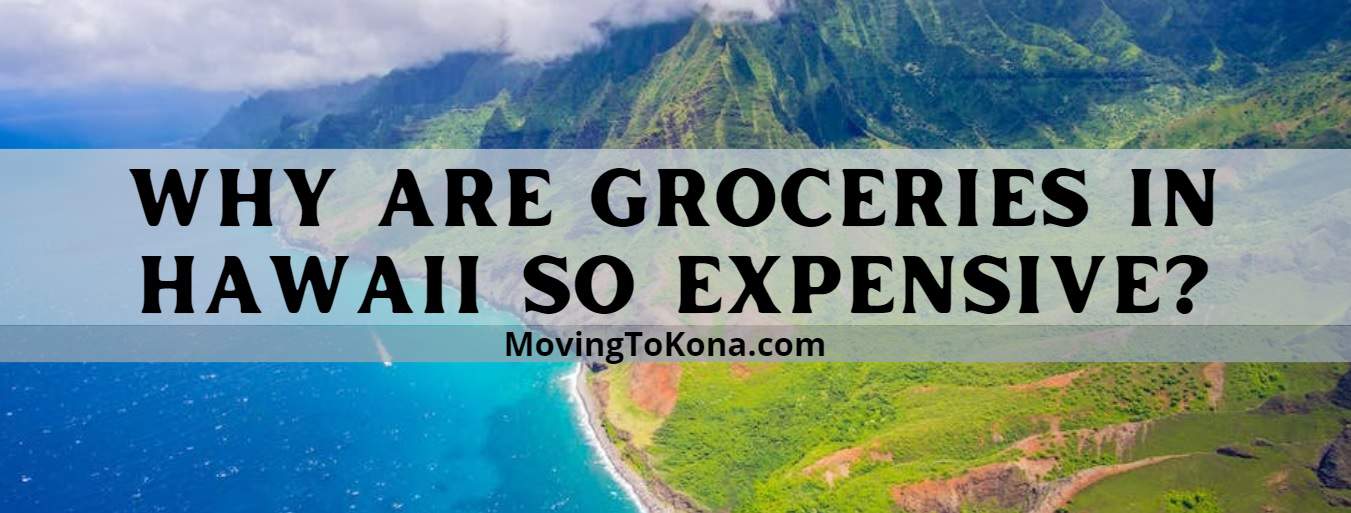Why are Groceries in Hawaii So Expensive?

What are the Primary Causes of the High Cost of Groceries in Hawaii?
The primary causes of the high cost of groceries in Hawaii are mainly due to the fact that we are surrounded by water, creating the need for products to be shipped or flown in. In addition, property values in Hawaii have been driven up by foreign investment, causing utility bills such as electricity to be expensive. Finally, the cost of food is further inflated by the shipping costs associated with importing food from the mainland, as well as the cost of local produce grown in the state’s nutrient-rich volcanic soil. All of these factors contribute to the high cost of groceries in Hawaii.

How Does the Cost of Groceries in Hawaii Compare to Mainland Prices?
The cost of groceries in Hawaii is typically higher than on the mainland due to the need to ship products from the mainland or other parts of the world. A study done by the Missouri Economic Research and Information Center concluded that Hawaii groceries ranked 164.6 compared to the national index of 100, with California ranking second at 119.3. This means that everyday grocery items such as milk and bakery products are significantly more expensive in Hawaii, with prices reaching up to $8.99 for a gallon of milk. Of course, there are some items that can be purchased at regular prices, such as locally grown fruits and vegetables in season. While it can be more expensive to buy food in Hawaii, shopping for local products is often cheaper than dining out.
What are some of the Popular Grocery Stores in Hawaii?
Popular grocery stores in Hawaii include Safeway, Foodland, Don Quijote, Times, Costco, Sam’s Club, and Walmart. Safeway and Foodland are the two largest locally owned and operated grocery chains in the state. Don Quijote tends to have the lowest prices overall of the supermarkets, while warehouse stores like Costco, Sam’s Club, and Walmart offer significant savings. These stores are not as comprehensive in their offerings as supermarkets, but they are still popular due to the high cost of groceries on the Hawaiian islands. For those looking to tailor their shopping list to local tastes and ingredients, rice is a popular local staple, and locally grown avocados and tropical fruits are typically cheaper than in many parts of the U.S.
How Does the Tourism Industry Affect the Cost of Groceries in Hawaii?
The tourism industry in Hawaii has a significant effect on the cost of grocery items. With the influx of visitors to the islands, there is an increased demand for food, leading to higher prices for food items such as cereal and bakery products, meat and poultry, fish and eggs, dairy products, produce, and beverages. The shipping costs of food from the mainland also contribute to higher prices, as most of the food available in Hawaii is imported from other states. This cost is then passed onto consumers, who often have to pay higher prices than they would on the mainland. In addition, the local chain “Foodland” is the dominant provider of food in the islands and the lack of cheaper alternatives means that residents often must pay a premium for their groceries. All these factors contribute to the higher prices of groceries in Hawaii due to the tourism industry.
What are Some Tips for Saving Money on Groceries in Hawaii?
Step 1: Search online for weekly deals at local grocery stores. Make a shopping list before you go to the store and look for special deals. Stores to check include Safeway, Times Market, KTA (Big Island), and Foodland.
Step 2: Consider visiting big box stores such as Costco, Walmart, and Sam’s Club (Honolulu). Although their large sizes and non-food items may increase your food bill, having a grocery list can help to keep you on track.
Step 3: Take advantage of grocery store loyalty programs and apps. Safeway and Foodland Maika’i offer free cards for visitors.
Step 4: Visit local farmers’ markets and roadside stands for better prices, as well as to support local businesses.
Step 5: Look for clearance items in the store. These can be found tucked away in the produce section.
Step 6: Don’t shop when hungry in order to avoid buying things you might not otherwise purchase.
Step 7: Be prepared to make substitutions in order to save money.
Step 8: Reduce bottled water use and take advantage of tap water, which is better than what’s in plastic bottles.
Step 9: For cereals and snacks, check Walmart and Target. These will generally be cheaper than the grocery stores, although the mini-mart in your hotel is likely to be the most expensive. Milk, eggs, and breads have the biggest price difference when compared to mainland prices, so try to avoid buying these items. Costco and Sam’s Club have the best deals for these products.
